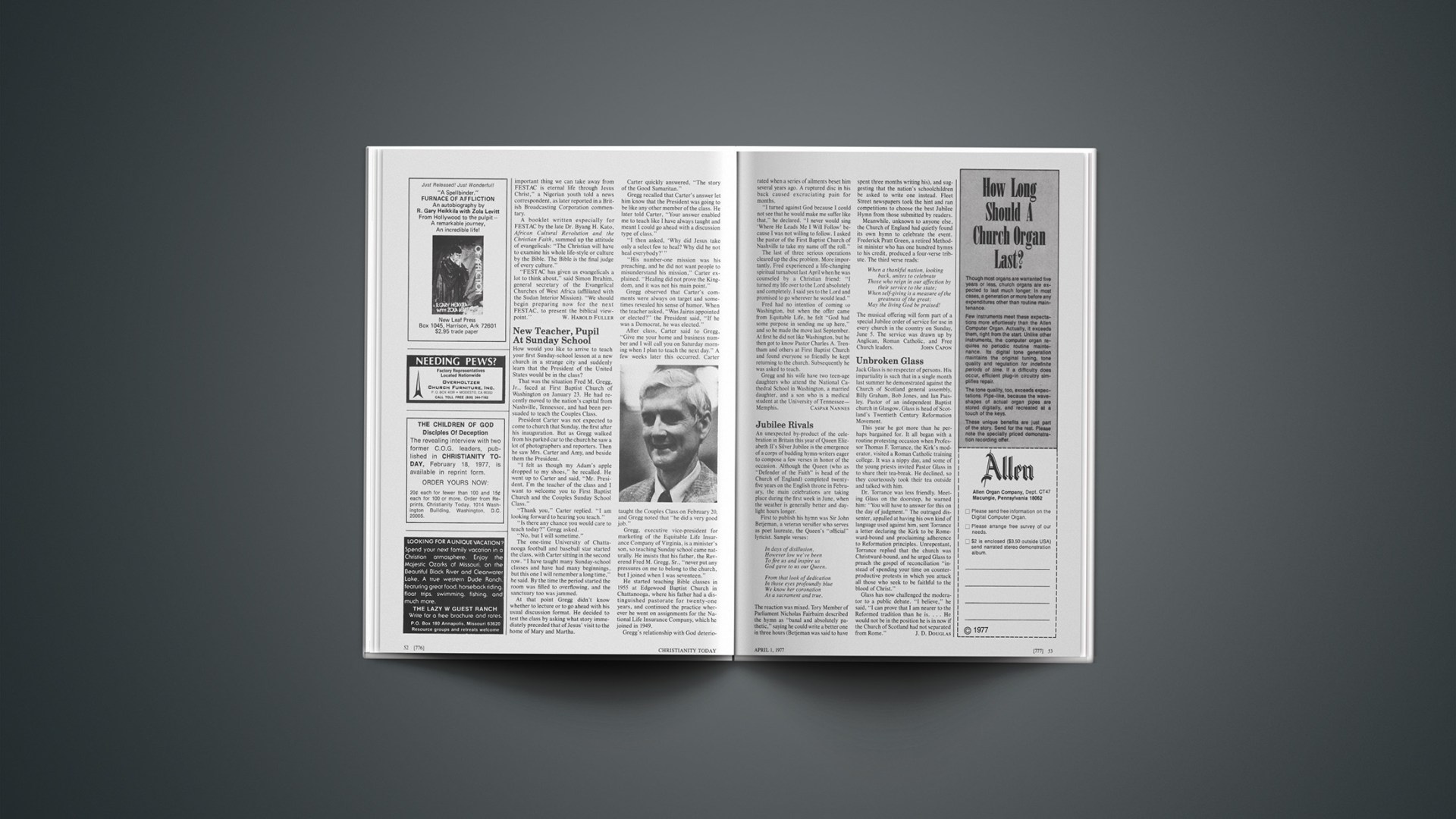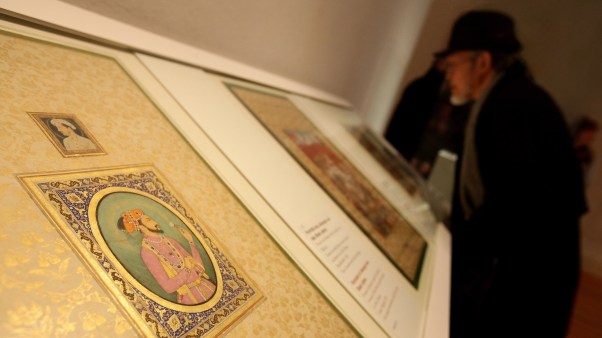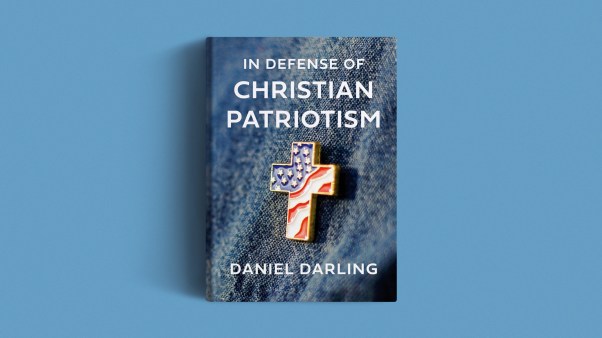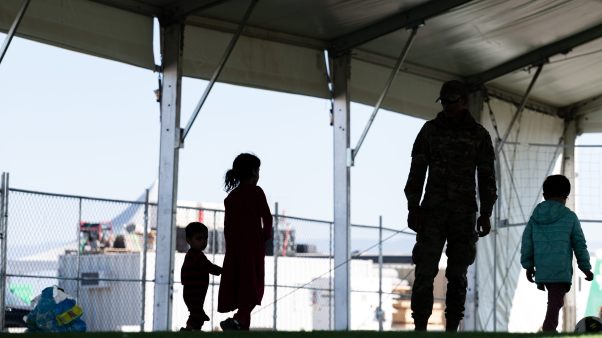Unlike previous terrorists taking hostages, the twelve members of the Black American Hanafi Muslim sect led by 56-year-old Hamaas Abdul Khaalis sought neither political advantage, ransom, nor amnesty. It was an unprecedented event, the thirty-eight-hour siege at three Washington, D.C., buildings March 9–11 in which 134 hostages were held, a newsman was killed, and nineteen other persons shot, stabbed, or beaten.
What made it unusual was its underlying religious nature. Its roots clearly go back to the 1930s, when W. D. Fard, an itinerant black preacher of unknown origin, combined the black theology of Garvey’s African Orthodox Church, the Islamic tenets of Drew Ali’s Moorish Science Temple, and the self-deity idea of an obscure Philadelphia cultic figure to form the “Black Muslims,” and to subsequent disagreements over the relations of several Black Islamic groups to one another and to the main body of orthodox Muslims in the United States (see August 10, 1973, issue, page 44). Two of the buildings chosen for the siege were religious: the capital headquarters of B’nai B’rith, a Jewish umbrella service organization that includes the well-known Anti-Defamation League, and the Islamic Center, an Embassy Row mosque that draws most of its prayer constituency from the large Middle Eastern contingent of capital area residents. (It is the largest of twenty such centers across the United States.) The third location was the District Building, the seat of the city government.
The sect was engaging, Khaalis said, in jihad, a type of Muslim holy war that sanctifies revenge on religious grounds. Four years earlier, the Khaalis home and sect quarters had been violently invaded by at least five men later proven to be Black Muslims (see February 16, 1973, issue, page 53). Five were convicted of the murder of two women and five children, all members of Khaalis’s family. Islamic law decrees death-for-death, but the courts had given only moderate sentences. (Another man was acquitted, while still another remains under court appeal.) Khaalis demanded that the imprisoned men be brought to him during the siege, ostensibly for firing-squad “justice.”
(Elijah Muhammad, the Black Muslim leader, always denied that he was involved in or had prior knowledge of the murders. But the bloody house invasion came only days after Khaalis had written to ministers in nearly all of Muhammad’s Temples describing Elijah as a “lying deceiver.” Some observers have always suspected that the Fruit of Islam, a paramilitary cadre of Black Muslims trained for their own type of jihad defense, played a role in the events four years ago, especially since Elijah was then regarded as the Messenger of Allah—a modern-day Muhammad. Within the past year, however, Elijah’s son and successor, Wallace, has disbanded the Fruit and repudiated the divine status of his father and of Fard.)
Another demand made by the Hanafi gunmen was that the movie Mohammad, Messenger of God be recalled. While the $17 million, Muslim-directed movie had been produced in consultation with Muslim authorities, both in the Middle East and in the United States, Khaalis objected on several grounds: the word “God” had been substituted for “Allah,” the Koran does not permit any image-production of any of Muhammad’s successors or attendants, according to Hanafi interpretation (the film has no representations of his face or voice), and the film inaccurately quotes words from the Koran. Other Muslims objected on similar grounds. Within a week after the siege ended, the movie was playing without incident at eleven theaters, mostly in New York and Los Angeles. One of Khaalis’s wives promised a reporter that renewed showings would bring more violence.
The hostages in the Hanafi siege later told of the strongly religious nature of their captors’ conversations and actions. Men and women were separated according to Islamic tradition, and women were made to cover their legs with newspapers. Jews were ridiculed and told that the Koran had decreed them to be perpetual wanderers. Most physical torture and woundings were reserved for Jewish males during the ordeal, although at least one black male was beaten also. Among the hostages were Abdul Rauf, director of the Islamic Center (whom the Hanafis regard as too approving of the Black Muslims), and Robert Tesdell, a white Disciples of Christ clergyman from New York City. “They were never nasty to us,” Tesdell remembered, though he was at one time threatened with beheading after a theological discussion with his captors.
The men holding Rauf and Tesdell were brothers: Clyde (37), Philip (26), and Samuel (22) Young, whose parents hold offices at Allen Chapel African Methodist Episcopal Church in Washington. “My sons grew up in Sunday school. They have been in church since they were infants,” Mrs. Young said in bewilderment.
Credit for the release of the hostages went to three Moslem ambassadors, Ghorbal of Egypt, Yaqub-Khan of Pakistan, and Zahedi of Iran, who bargained and prayed and recited the Koran for more than two hours until Khaalis decided to give up. Khaalis himself refused to join in the prayers because the place was “unclean” from the debris and blood of the seizure. At one point he shouted, “Don’t teach me the Koran. I know it better than you.”
Yaqub-Khan later admitted to reporters that Khaalis had been correct in his assessment. Even Ghorbal had to brush up on his religious teachings and be supplied with apt verses by another embassy official for use in the negotiations. The three ambassadors agreed that the key verse was this one: “And let not the hatred of some people in shutting you out of the Sacred Mosque lead you into transgression and hostility on your part; help ye one another in righteousness and piety, but judge ye not one another in sin and rancor.”
Foundry Methodist Church, a temporary headquarters for families of the B’nai B’rith hostages, pealed its bell just before 2 A.M. when the negotiations ended successfully and again when the hostages were led from the building. Mayor Walter Washington gave God credit for the release, and many of the people on the scene shouted “Praise the Lord” when it was all over.
There was little praise from Washington residents, however, when Khaalis and three of his accomplices were released after their arraignments. Under provisions of the District of Columbia bail law, they were allowed to await trial at home instead of in jail.
From Faith To Faith
The Hanafi sect of Muslims in Washington, D. C., is led by a 56-year-old man named Hamaas Abdul Khaalis. The history of the group is tied to the events that shaped Khaalis’s own life.
Khaalis was born Ernest Timothy McGhee in Gary, Indiana. Both he and his parents were devout Seventh-Day Adventists. Khaalis left that church soon after high school graduation (he was in the upper fifth of his class) to join the Catholic Church. His spiritual odyssey continued when he became a follower of a rather indefinite form of the Islamic faith in 1946. By 1950 he had become a full member of Elijah Muhammad’s Nation of Islam (Black Muslims), although he now says that he only pretended to follow Elijah’s teachings while covertly attempting to remold members along orthodox (Sunni) Muslim lines.
During the early fifties, Khaalis was in charge of the Nation of Islam’s school, known as the University of Islam. By 1956 he had become national secretary of the sect—the second in command.
While a Black Muslim, Khaalis was one of Malcolm X’s closest friends. Khaalis takes credit for subtly influencing Malcolm’s pilgrimage to Mecca and subsequent rejection of Elijah’s sect. Khaalis’s own break with the movement came in 1958, reportedly over disagreements concerning Elijah’s lavish spending and personal lack of discipline.
From 1958 to 1967 Khaalis was loosely affiliated with the Islamic faith. He continued his close ties to Malcolm until Malcolm’s death in 1965. That death seemed to deepen Khaalis’s hatred for Elijah’s group; and in 1967, in New York City, he formed the first known Black American Hanafi group. (The Hanafis are one of the four slightly varying schools of interpretation of Islamic law among the Sunnis.)
After small success in forming a Hanafi group there (in addition to running an experimental alternative education program for the Urban League), Khaalis moved to Washington, D. C., in 1970. He and his family took up residence in a large house donated by basketball star Kareem Abdul-Jabbar, a Los Angeles convert to the Hanafis.
Among the members of the Khaalis family is a wife named Bibi (or BeeBee), who is paralyzed from the 1973 shootings. She is a daughter of United Presbyterian minister Reginald Hawkins of Charlotte, North Carolina. Hawkins, also a dentist and sometime politician, told reporters he did not favor the Washington takeover by his son-in-law. The Washington Post quoted the father-in-law as saying he understood the action as “an expression coming out of a hurt,” but “I don’t think much of it.”
The spacious, Tudor-style house in which the extended family lives has a plaque near the main entrance identifying it as “Hanafi Madh-Hab Center, Islam Faith, United States of America.”
Neighbors say that only about a dozen families frequent the meetings there. However, the Washington area Hanafi following is estimated at 300.
Schaeffer on Film And in Person
“How Should We Then Live?,” Francis A. Schaeffer’s new ten-episode film series on the rise and decline of Western thought and culture (see October 8, 1976, issue, page 22), is being hailed as the finest documentary presentation of Christian truth ever produced in motion pictures. Schaeffer incisively assesses the failure of secular humanism to answer life’s crucial questions. He contends that the revealed biblical truth of the triune God offers the only world view that provides a unity between universal absolutes and the particulars of human existence. In Jesus Christ, he asserts, God offers man the spiritual wholeness and intellectual satisfaction that give meaning to life. Schaeffer’s informed biblical world view is likely to produce enlightenment, controversy, and Christian commitment as the films are shown across America and the world.
In the eighteen cities where Schaeffer has recently conducted seminars, people of all ages have bought tickets ($29 for adults and $18 for students for three-day sessions, $5 for one-day sessions) and given Schaeffer standing ovations for his brilliant work in the films. Attendance figures for three-day seminars as reported by Billy Zeoli, executive producer of Gospel Films, included Oakland-San Jose, 4,500; Atlanta, 3,800; and Chicago, 3,100. One-day seminars drew equally well, e.g., Los Angeles, 6,600; Denver, 3,400; Pittsburgh, 2,500; Seattle, 3,500; and Toronto, 4,400.
The ten half-hour films combine Schaeffer’s understandable, well researched narration with a variety of cinematic scenes that guide the viewer through the Roman Age, Middle Ages, Renaissance, Reformation, and modern centuries to the 1970s. The fast-paced, simplified documentary brings together stirring dramatic sequences, magnificent art works that reflect various periods of thought, excerpts from commercial films and newsreels, ancient book texts, and striking photography of landscapes, ruins, and cities. The films are suitable both for church gatherings and for academic meetings.
The series was motivated by Schaeffer’s twenty-four-year-old artist son, Franky Schaeffer. As producer, he spent $1.17 million shooting 200,000 feet of film in 122 cities and fourteen countries. Out of this, 10,000 feet of film were skillfully edited by Mel White. The cost of the project was largely defrayed by grants from the Lilly Endowment and other donors. Proceeds from the Schaeffers’ seminar tour will help erase the existing $138,000 deficit in production costs.
The range of thought heard and seen in the film was enhanced in the seminars as, clad in Alpine knickers and perched on a table, Schaeffer answered questions on philosophy, theology, and the arts. He expressed hope that the films and the accompanying book will serve two objectives: Christian evangelism and the recognition of the Lordship of Christ.
After April 15, the film series will be available for rental at $270 or for purchase at $2,450. The Netherlands National Television network has scheduled it for showing in prime time in September. More than 400 American colleges and universities have expressed interest in possible showings. Presentation of the films at churches, schools, organizations, and on local and possibly even national television in America promises vigorous discussion of the conflict between secular humanism and revealed Christian truth.
ROBERT CLEATH
The Gospel For Ghana
A national congress on evangelization will be held in Kumasi, the capital of Ashanti Region of Ghana this July. About 1,000 ministers, teachers, evangelists, missionaries, and other evangelical leaders have been invited to the ten-day meeting on a university campus. Speakers include American evangelist Leighton Ford, Gottfried Osei-Mensah of the Lausanne continuation committee, Anglican John Stott of Britain, and Anglican bishop Festo Kivengere of Uganda.
A budget of $108,000 has been drawn up, according to Isaac Ababio, executive chairman of the congress. “The hour has come,” he said, “for Christians in this nation to consider together afresh the meaning and relevance of evangelism, salvation, mission, and conversion.” It is time, he added, “to unite in bold new efforts” of Gospel proclamation.
G. B. K. Owusu
Shaba Shuffle
Seven United Methodist missionaries were evacuated when troops invaded Zaire from Angola last month, but husbands of some of the women who left stayed at their stations. The territory taken over by the invaders was in the southern province of Shaba, formerly known as Katanga.
A United Methodist official in New York said twenty-six adults were assigned to the region as missionaries. Some of those who remained were considered under house arrest, but were permitted to continue radio contact with Methodist personnel at other stations in Zaire. Those at Kapanga, about fifty miles east of the Angolan border, were said to be “going about their usual work.”
Zaire’s President, Mobutu Sese Seko, immediately appealed for American help. President Carter responded with two planeloads of materiel.
Black Culture—The Bible Is the Judge
While African church leaders assess the effects on their work of the Second World Black and African Festival of Arts and Culture, the Christian witness carried on during the recent month-long “FESTAC” continues to make its own impact on many participants.
Commander O. P. Fingesi, president of FESTAC, was so impressed by the message at the closing Christian service that he asked for copies to send to all the members of Nigeria’s Supreme Military Council. The message will also be distributed to FESTAC committees in other African states, in both French and English.
“I’ve never heard a message like this,” Commander Fingesi told the preacher, Samuel I. Odunaike, president of the Nigerian Evangelical Fellowship and of the Association of Evangelicals of Africa and Madagascar. “Why were you not a speaker at FESTAC’s colloquium?”
In his message, Odunaike attacked the allegation that Christianity is the “white man’s religion.”
“Christianity in America or Britain is as pagan as Christianity in Africa,” he declared. “But biblical Christianity is not white or black, capitalist or socialist. It is universal. If we want to call Christianity foreign, we need to realize it is foreign to the whole world, because it came from outside the world—a revelation from God himself to us all.”
Before FESTAC, Christian leaders had expressed concern about the call for a return to traditional religions. They were apprehensive that this might signal a new hostility to the Gospel. Both Christian and Muslim leaders decried the emphasis on idolatrous customs and sensuous naked dancing.
“Although the ‘preachers’ of this so-called cultural revival have not yet openly denounced Islam and Christianity as ‘foreign’ religions, a time is soon coming when they will,” wrote a government educator in the New Nigerian.
Although a play staged by the Tanzanian group depicted missionaries as agents of colonial oppression, and Marxist dogma was strongly urged by some, there was no overt attack on Christianity. In the colloquium, in which intellectuals debated the major issues of the black world, condemnation of any religion was carefully avoided.
In a paper presented at the colloquium, a working group on black civilization and religion stated: “The Christian, Muslim, and Jewish religions are foreign to Africa because, historically, they are not, like the traditional religions, molded in the African cultural values. But seeing that they had been accepted by the Africans, they ceased being foreign, just as the art of writing, although imported from Europe, is no longer regarded as foreign.”
The Ethiopian Orthodox Church delegates objected to the implication that Christianity was a European import, pointing out that Ethiopia had been officially Christian since the fourth century.
One delegate objected to the statement that religion encourages man to fight social evils, pointing out that slavery still exists in Islam, and that Christianity and colonialism had been wrapped up together.
The colloquium session on religion called for religious liberty, translation of religious texts into African vernaculars, formulation of an African liberation theology, and a blending of traditional religions with Christianity and Islam. “One should start with African traditional religion as a foundation,” stated a paper, “while the Muslim and Christian religions should in the light of African traditional religion be indigenized, adapted, acclimatized, or incarnated.”
However, a call for the release of all religious prisoners was rejected as too political. “Who decides whether imprisonment is on the basis of religion or politics?” delegates asked.
The colloquium strongly rejected a Nigerian’s proposal that because religion proves divisive, instruction in it should not be included in education.
In discussing religious liberty, a Mauritanian delegate declared that there is only one known Christian in his nation. The chairman challenged the statement and told him to check his facts—“you’ll find there are more.”
Other delegates objected to discussing Islam and Christianity, pointing out that the topic was traditional religions. “Abraham is the root of all our problems between Christianity and Islam,” the chairman said.
The colloquium rejected a wholesale return to traditional customs. “We don’t want to go back to clay,” delegates stated.
Rehearsals for traditional dancing had featured semi-nudity, but FESTAC president Fingesi, who was reported to have had a spiritual experience early this year, banned nudity among the Nigerian performers. Nigeria’s head of state, General Obasanjo, a Baptist, backed him in this decision.
Besides participating in interdenominational church services, evangelicals sought opportunities for witness. The Christian Graduates Fellowship published a sixteen-page tract, “Return to Origin,” clearly stating that man’s only hope is a return to God through salvation in Christ Jesus. The first printing of 20,000 was cleared out fifteen minutes after the opening ceremony.
Young people distributed tracts and witnessed among the 15,000 black participants from all over the world. “The most important thing we can take away from FESTAC is eternal life through Jesus Christ,” a Nigerian youth told a news correspondent, as later reported in a British Broadcasting Corporation commentary.
A booklet written especially for FESTAC by the late Dr. Byang H. Kato, African Cultural Revolution and the Christian Faith, summed up the attitude of evangelicals: “The Christian will have to examine his whole life-style or culture by the Bible. The Bible is the final judge of every culture.”
“FESTAC has given us evangelicals a lot to think about,” said Simon Ibrahim, general secretary of the Evangelical Churches of West Africa (affiliated with the Sudan Interior Mission). “We should begin preparing now for the next FESTAC, to present the biblical viewpoint.”
W. HAROLD FULLER
New Teacher, Pupil At Sunday School
How would you like to arrive to teach your first Sunday-school lesson at a new church in a strange city and suddenly learn that the President of the United States would be in the class?
That was the situation Fred M. Gregg, Jr., faced at First Baptist Church of Washington on January 23. He had recently moved to the nation’s capital from Nashville, Tennessee, and had been persuaded to teach the Couples Class.
President Carter was not expected to come to church that Sunday, the first after his inauguration. But as Gregg walked from his parked car to the church he saw a lot of photographers and reporters. Then he saw Mrs. Carter and Amy, and beside them the President.
“I felt as though my Adam’s apple dropped to my shoes,” he recalled. He went up to Carter and said, “Mr. President, I’m the teacher of the class and I want to welcome you to First Baptist Church and the Couples Sunday School Class.”
“Thank you,” Carter replied. “I am looking forward to hearing you teach.”
“Is there any chance you would care to teach today?” Gregg asked.
“No, but I will sometime.”
The one-time University of Chattanooga football and baseball star started the class, with Carter sitting in the second row. “I have taught many Sunday-school classes and have had many beginnings, but this one I will remember a long time,” he said. By the time the period started the room was filled to overflowing, and the sanctuary too was jammed.
At that point Gregg didn’t know whether to lecture or to go ahead with his usual discussion format. He decided to test the class by asking what story immediately preceded that of Jesus’ visit to the home of Mary and Martha.
Carter quickly answered, “The story of the Good Samaritan.”
Gregg recalled that Carter’s answer let him know that the President was going to be like any other member of the class. He later told Carter, “Your answer enabled me to teach like I have always taught and meant I could go ahead with a discussion type of class.”
“I then asked, ‘Why did Jesus take only a select few to heal? Why did he not heal everybody?’ ”
“His number-one mission was his preaching, and he did not want people to misunderstand his mission,” Carter explained. “Healing did not prove the Kingdom, and it was not his main point.” Gregg observed that Carter’s comments were always on target and sometimes revealed his sense of humor. When the teacher asked, “Was Jairus appointed or elected?” the President said, “If he was a Democrat, he was elected.”
After class, Carter said to Gregg, “Give me your home and business number and I will call you on Saturday morning when I plan to teach the next day.” A few weeks later this occurred. Carter taught the Couples Class on February 20, and Gregg noted that “he did a very good job.”
Gregg, executive vice-president for marketing of the Equitable Life Insurance Company of Virginia, is a minister’s son, so teaching Sunday school came naturally. He insists that his father, the Reverend Fred M. Gregg, Sr., “never put any pressures on me to belong to the church, but I joined when I was seventeen.”
He started teaching Bible classes in 1955 at Edgewood Baptist Church in Chattanooga, where his father had a distinguished pastorate for twenty-one years, and continued the practice wherever he went on assignments for the National Life Insurance Company, which he joined in 1949.
Gregg’s relationship with God deteriorated when a series of ailments beset him several years ago. A ruptured disc in his back caused excruciating pain for months.
“I turned against God because I could not see that he would make me suffer like that,” he declared. “I never would sing ‘Where He Leads Me I Will Follow’ because I was not willing to follow. I asked the pastor of the First Baptist Church of Nashville to take my name off the roll.”
The last of three serious operations cleared up the disc problem. More importantly, Fred experienced a life-changing spiritual turnabout last April when he was counseled by a Christian friend: “I turned my life over to the Lord absolutely and completely. I said yes to the Lord and promised to go wherever he would lead.”
Fred had no intention of coming to Washington, but when the offer came from Equitable Life, he felt “God had some purpose in sending me up here,” and so he made the move last September. At first he did not like Washington, but he then got to know Pastor Charles A. Trentham and others at First Baptist Church and found everyone so friendly he kept returning to the church. Subsequently he was asked to teach.
Gregg and his wife have two teen-age daughters who attend the National Cathedral School in Washington, a married daughter, and a son who is a medical student at the University of Tennessee—Memphis.
CASPAR NANNES
Jubilee Rivals
An unexpected by-product of the celebration in Britain this year of Queen Elizabeth II’s Silver Jubilee is the emergence of a corps of budding hymn-writers eager to compose a few verses in honor of the occasion. Although the Queen (who as “Defender of the Faith” is head of the Church of England) completed twenty-five years on the English throne in February, the main celebrations are taking place during the first week in June, when the weather is generally better and daylight hours longer.
First to publish his hymn was Sir John Betjeman, a veteran versifier who serves as poet laureate, the Queen’s “official” lyricist. Sample verses:
In days of disillusion,
However low we’ve been
To fire us and inspire us
God gave to us our Queen.
From that look of dedication
In those eyes profoundly blue
We know her coronation
As a sacrament and true.
The reaction was mixed. Tory Member of Parliament Nicholas Fairbairn described the hymn as “banal and absolutely pathetic,” saying he could write a better one in three hours (Betjeman was said to have spent three months writing his), and suggesting that the nation’s schoolchildren be asked to write one instead. Fleet Street newspapers took the hint and ran competitions to choose the best Jubilee Hymn from those submitted by readers.
Meanwhile, unknown to anyone else, the Church of England had quietly found its own hymn to celebrate the event. Frederick Pratt Green, a retired Methodist minister who has one hundred hymns to his credit, produced a four-verse tribute. The third verse reads:
When a thankful nation, looking back, unites to celebrate
Those who reign in our affection by their service to the state;
When self-giving is a measure of the greatness of the great:
May the living God be praised!
The musical offering will form part of a special Jubilee order of service for use in every church in the country on Sunday, June 5. The service was drawn up by Anglican, Roman Catholic, and Free Church leaders.
JOHN CAPON
Unbroken Glass
Jack Glass is no respecter of persons. His impartiality is such that in a single month last summer he demonstrated against the Church of Scotland general assembly, Billy Graham, Bob Jones, and Ian Paisley. Pastor of an independent Baptist church in Glasgow, Glass is head of Scotland’s Twentieth Century Reformation Movement.
This year he got more than he perhaps bargained for. It all began with a routine protesting occasion when Professor Thomas F. Torrance, the Kirk’s moderator, visited a Roman Catholic training college. It was a nippy day, and some of the young priests invited Pastor Glass in to share their tea-break. He declined, so they courteously took their tea outside and talked with him.
Dr. Torrance was less friendly. Meeting Glass on the doorstep, he warned him: “You will have to answer for this on the day of judgment.” The outraged dissenter, appalled at having his own kind of language used against him, sent Torrance a letter declaring the Kirk to be Rome-ward-bound and proclaiming adherence to Reformation principles. Unrepentant, Torrance replied that the church was Christward-bound, and he urged Glass to preach the gospel of reconciliation “instead of spending your time on counterproductive protests in which you attack all those who seek to be faithful to the blood of Christ.”
Glass has now challenged the moderator to a public debate. “I believe,” he said, “I can prove that I am nearer to the Reformed tradition than he is.… He would not be in the position he is in now if the Church of Scotland had not separated from Rome.”
J. D. DOUGLAS










